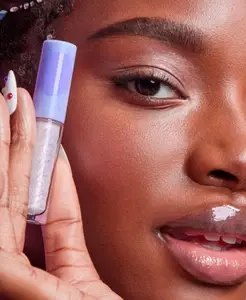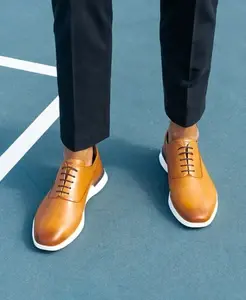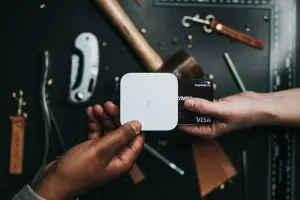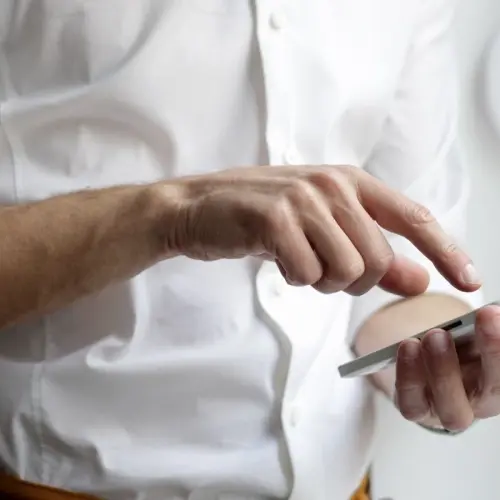Get access to exclusive updates, the latest news and the inside scoop 🍨

How Does Augmented Technology Boost Sales?
In 2022, the boundaries, demands and expectations of ecommerce have evolved dramatically, expanding to the likes of augmented technology.
Don't want to read the whole article? 😏Click here for chapters

Written by Madeleine
Learn to Boost Sales with Augmented Technology 📲
In 2022, the boundaries, demands and expectations of ecommerce have evolved dramatically, expanding to the likes of augmented technology to enable customers to understand how a product will fit into their lives.
For instance, would this couch look good in their living room? Will that shade of lipstick suit their skin tone? It is these types of questions that will be addressed for online shoppers through the communication and confirmation of augmented technology.
It is this approach to the customer experience that enables consumer enquiries to be answered in a way that has traditionally been a challenge for browsers when shopping for goods online.
As a result, this concept lends itself to the idea that the future of augmented reality corresponds and synchronises strongly with the future of ecommerce.
Quick Answer
So, the question is - how can augmented technology boost sales for ecommerce businesses?
Well, the simple truth is that professional product photography and detailed item descriptions can only reveal so much to the consumer, but with the involvement of augmented technology, customers can view a full 3D product model.
This means that the promising future of augmented reality and how we shop as consumers can be utilised by businesses to boost sales.
For instance, let’s say that you’re a consumer who is in the market for a new couch, with the assistance of augmented reality, online shoppers will have the capability to virtually place that couch in their living room at their fingertips via their phone's camera.
Therefore online shoppers can use augmented technology to determine if a product’s size and style are a good match to their design preferences and needs.
Additionally, augmented technology can be used by consumers to try on fashion and beauty products and it’s no secret that these types of virtual shopping experiences are more compelling than ever, given how the pandemic has pushed online retail since the early months of 2020.

Solving Ecommerce Pain Points 👌
Russ Maschmeyer, Shopify’s Product Lead for AR in the Shop Channel application claims that this solution helps brands seamlessly add augmented technology experiences to their online store(s).
“It just solves some really obvious pain points that have existed in ecommerce forever.
We’re entering into this phase where we get to experience these products, on our face, in our home, in our environment, on our body, in these ways that bring us kind of full circle back to the experience we used to have when we would go and visit stores in person.
Except now it’s so much better because instead of seeing that couch in a showroom, you can see it in your living room, where it's going to end up.”
Boosting Sales with Augmented Technology
So, now that we’ve covered how augmented reality works and benefits online shoppers, it’s time to take a closer look at how ecommerce sales can be boosted for Shopify stores across the web with the help of this futuristic technology.
Rebecca Minkoff
The ability for online browsers to view products in 3D improves conversion rates significantly and when the designer fashion brand - Rebecca Minkoff, experimented with 3D product models, the business discovered that:
Shoppers are 44% more likely to add an item to their cart after interacting with a 3D product model.
Customers are 27% more likely to place an order after interacting with a 3D product model.
Visitors are 65% more likely to place an order after interacting with a product using augmented technology.
Gunners
However, augmented technology can also be a very useful tool for online shoppers who want to understand exactly how an item will fit into their lifestyle.
For instance, online shoppers browsing on the Gunners store can view super large items such as dog kennels with augmented reality, enabling browsers to determine how each product would look in their space and if the item would be the correct size for their pet.
When Gunners incorporated augmented technology into the heart of its shopping experience, the business recorded:
A 3% increase in cart conversion rates.
A 40% increase in order conversion rates.
A 5% reduction in return rates.
As a result, a higher conversion rate combined with a reduced return rate means more money in your pocket and according to Russ at Shopify, the shift from purchasing through browsers to mobile applications means more sophisticated power that can easily handle the future of augmented reality.
Note: Even though this technology appears to be somewhat new, the tools for creating augmented technology experiences are readily available to merchants on Shopify.
What’s Pushing the Future of Augmented Reality? 🔮
Augmented technology has become a particularly relevant and compelling ecommerce tool as a result of the changing shopping behaviour and newly available ecommerce technologies.
The Pandemic Push
However, since the start of the pandemic, more consumers have been shopping from home, but before the early months of 2020, shopping used to simply involve walking into a store and trying things on, measuring products, or at the very least getting up and personal with a purchase.
However, since the start of the pandemic, there was a significant transition to online and curbside shopping, which required evaluating a purchase solely based on product photography and detailed descriptions.
So, even when we were allowed to shop in person, things were different, with changing rooms closed and the ability to try products such as cosmetics off the counter, but this is where augmented technology begins to fill the gap.
For instance, when browsing the high-end waste bin maker Simplehuman website with a mobile, customers simply need to click and place that item in their space.
No guesswork, just a clear view of how something will match the user's home aesthetic.
A New Generation of Shoppers
According to a recent Snapchat research report, 93% of Snapchat users are interested in utilising augmented reality when shopping online.
Snapchatters are also x1.6 more likely than non-Snapchat users to have used augmented reality to try on makeup or clothing products.
Snapchat also has a financial stake in promoting augmented technology and is also a proven conversion booster for brands.
“This is a generation that has grown up not only with technology but with mobile phones their entire lives.
I think people are just discovering how effective AR can be in helping them make faster and better decisions about what they buy and bring into their lives.” - Russ Maschmeyer
Easier Access to Technology
While it sounds complex, it’s easier than ever to add 3D renderings to your store on Shopify. The first step is to create a 3D rendering, which can boost conversion rates.
The good news is that Shopify’s core themes can display 3D renderings by default, which means that merchants will simply need to upload the product model’s file as you would with a still image to make use of this up and coming technology.
Additionally, the option of utilising augmented technology can be added to custom themes. So, if you want to add this functionality to your Shopify website, simply go to the Shopify App Store and search for 'Angle 3D Configurator', which will walk you through the process of getting set up and show you the final product.
Furthermore, merchants can also look for Shopify Experts, as obtaining professional assistance enables store owners to add a customisable 3D rendering to their website even if they lack the technological knowledge or know-how.
It does take some investment to get 3D models ready, but Russ noted that the cost of this has dropped over time, from thousands to hundreds of dollars.
If you're just getting started with augmented technology, we’d recommend concentrating on your core items initially, whilst measuring their impact before expanding.
So, what are your thoughts on the impact that augmented technology has had within the ecommerce industry? Reach out and let us know.
If you’re actively looking to work with a Shopify agency designer or developer to assist you with your business, we’d love to hear from you. Get in touch to get started!
Get Started with Shopify
Looking to get started with Shopify? Take advantage of Shopify's 14-day free trial, no credit card is required.
If you're actively looking to work with a Shopify agency designer or developer to assist you with your business, we'd love to hear from you. Get in touch to get started!
Want to read some more?
Have a look over more posts related to this one















